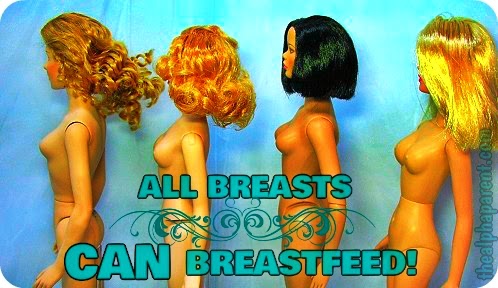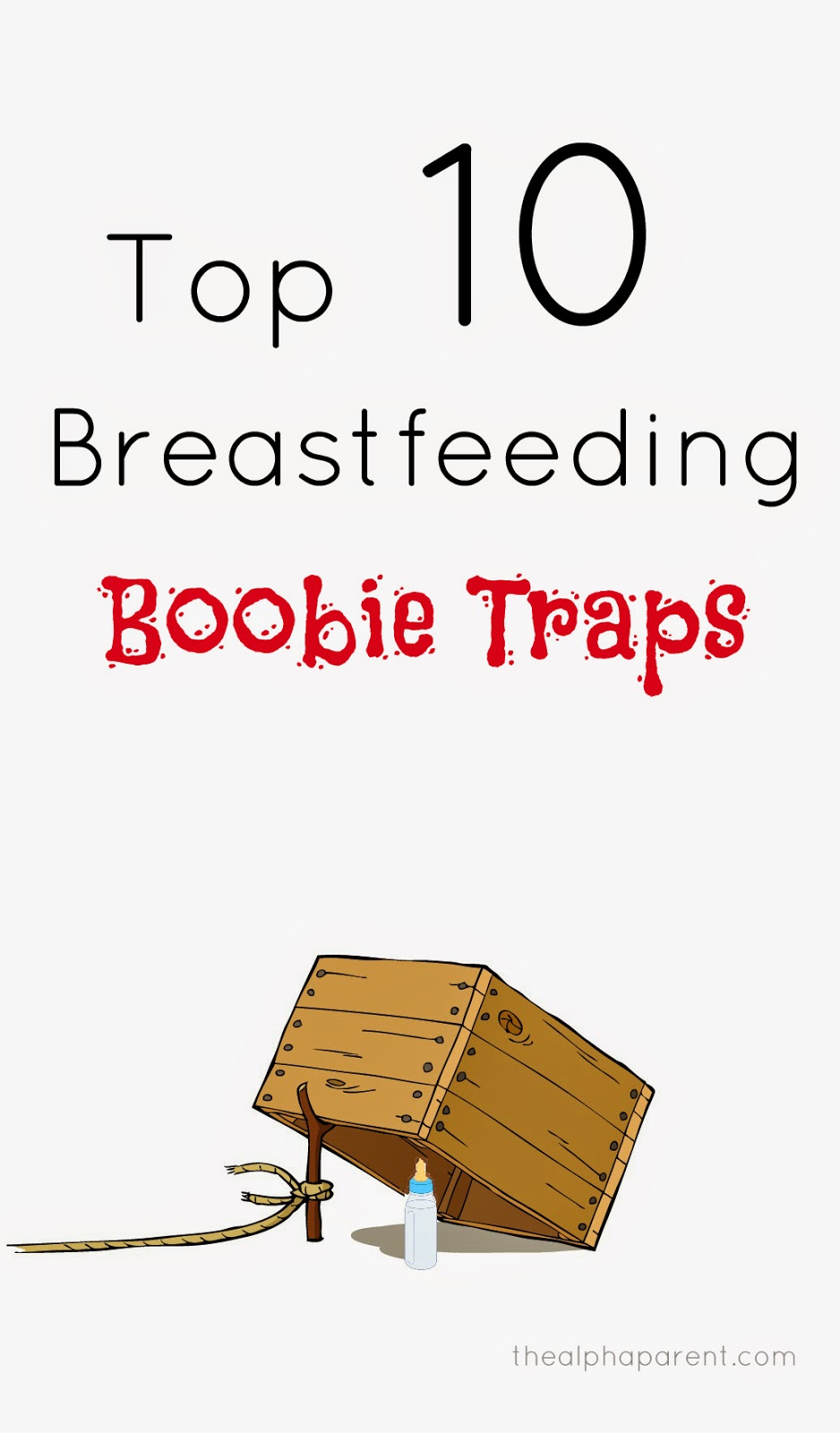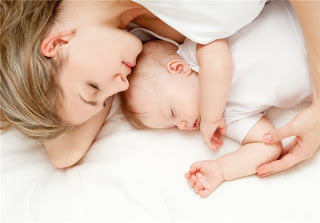I like using the ordinary to approach what is commonplace for some but still unfamiliar for others. The purpose is twofold: to show how everyday analogies, images, metaphors, similes and symbols can be used to see breast milk and breastfeeding from a fresh perspective; and to suggest how this approach in turn can help others see breast milk and breastfeeding in ways they would surely never have imagined. I include an occasional wink at the marketplace by using some cherished commercial jargon to describe what Mother Nature is up against, every day, on a very uneven playing field.
Of pleasure and pain
When I was at most 8 or 9 years old I distinctly recall seeing a woman moving down the street with pronounced difficulty. In retrospect, the word waddle comes to mind; certainly walk would have been an exaggeration. You see, the woman was decked out in the popular attire of the early 1950s that has come and gone in several sartorial swings since. She was wearing that killer combination of a very tight-fitting kick-pleat skirt and super-high spike-heel shoes – the kind that simultaneously tightens the hamstrings; thrusts outward, and conspicuously raises, the buttocks; and bends the waist unnaturally forward. And I remember making two distinct, if interrelated, observations about what I was seeing. The first was fairly explicit: Gee, she looks like she’s really uncomfortable, even in pain. The second was more implicit but no less obvious: I don’t understand this picture at all, but I’m sure that one day, when I’m grown up, I will. Where my first observation is concerned, countless podiatrists, rheumatologists, chiropractors and women themselves have long since confirmed my juvenile intuition. As to the second, I’m still awaiting enlightenment.
The perception of pleasure and pain – and sometimes the pleasure of pain – surely ranks high on the short list of ultimate human subjectivities. Pain specifically, whether its anticipation, experience or recollection, is mediated by a number of key variables; these include the sociocultural (group-imposed values and expectations), the chemical (endorphins, medication) and the experiential (learned behavior). And speaking of short lists, “sore nipples” certainly sits up there with “insufficient milk” as among the most common reasons primarily Western women give for ceasing to breastfeed. However, if all the breastfeeding women I know are to be believed, breastfeeding and pain are not synonymous (from an evolutionary standpoint, how could they be?). Since pre-history nipple soreness is just one more thing that more experienced mothers typically assist less experienced mothers in preventing or correcting. But I can’t help but wonder how many women base their decision not to breastfeed at all on their fear of pain. So, maybe I understand a little better now what getting all gussied up in a tight skirt and high-heels means to someone who’s primarily motivated by being dressed to kill at any cost – welcome to the School of Silent Sartorial Suffering – and how important it is for a breastfeeding mother to receive elementary guidance on preventing sore nipples or worse.
Flying civilly
I took my first commercial flight in 1965. In the hundreds of times I’ve flown since, in addition to the vastly increased number of travelers I’ve seen some important changes in the size and technical enhancement of aircraft. However, thanks to uniform International Civil Aviation Organization rules applied by the world’s governments, at least one aspect of air travel has remained fairly constant – the timing and content of the security briefing flight attendants provide passengers before each and every take-off.
Doubtless you already know the drill. In addition to being requested to fasten your seat belt and not to smoke, you are routinely advised that in case of a loss of oxygen in the cabin, oxygen masks will spill out automatically from an overhead compartment; and should the aircraft be forced down over water a life jacket is located under your seat.
All very reassuring information, or is it? More is probably less, especially for frequent flyers; it’s unlikely that our attention is exactly riveted to messages that are repeated, if not necessarily heard, over and over again – like “breast is best” for example. In any case, I’d like to suggest a different perspective to this security briefing.
I’m reasonably certain that there are at least two key implicit assumptions in this connection that every passenger, if pressed, would readily accept. The first is that the equipment – the mask and the vest as much as the automatic oxygen delivery system – reflects the most up-to-date technology, that it is of the highest quality manufacture, that it is checked regularly by maintenance staff and replaced as needed, and that it will, indeed, work in case of emergency. My second assumption? That we’ll never actually have to use the stuff!
This is in fact an excellent way to regard infant formula. Unquestionably, for the sake of babies who have to be fed on a breast-milk substitute, we need to continue doing everything we can to ensure that formula is the least inadequate that nutritional science can possibly make it. And then we need to ensure that it’s used only in an emergency.
Break glass only in case of emergency
When I worked in an office environment, there were regular fire drills to prepare us for the day that naturally we all hoped would never arrive. At one point I was also asked to serve as floor warden, and this meant that I was responsible for making sure that everyone had left the building – using the stairway of course – during what, fortunately, was never anything more serious than periodic testing of the emergency fire-alarm and evacuation systems. There were several stairways in the building; however, the one at the extreme east end, while permitting movement between floors, led only to a locked door on the ground floor. The good news was that just to the left of this locked door was a small bright-red metal box. The cover was made of glass so it was easy to see that behind hung a key, which was readily accessible thanks to a little steel hammer mounted to one side – for use only in case of emergency of course. Infant formula also belongs behind glass, for use only in case of emergency by babies who have to be fed on a breast-milk substitute.
The sky’s the limit
Think for a moment of breast milk as if it were the tallest, most aesthetically pleasing and architecturally most accomplished building the world has ever known. No one, least of all infant formula manufacturers, would dispute this grandiose image of superiority. On the contrary, formula manufacturers have a stake in perpetuating the public perception that breast milk is unquestionably the best for babies – and that formula is right behind.
Now, even as you mouth the mantra “breast is best”, think of infant formula the way manufacturers continually invite you to do – as another building which, while not quite so imposing as Mother Nature’s Own, is nevertheless relatively tall, rather aesthetically pleasing, and reasonably architecturally accomplished. No, it’s not.
In fact, there’s only one building on the baby-feeding block. By definition everything else is, both literally and figuratively, inferior to breast milk and thus no more than a mere basement. And while all infant formulas are breast-milk substitutes, not every breast-milk substitute is an infant formula. Thus, from a nutritional hierarchical (lowerarchical?) standpoint, we can classify formula as the least-bad alternative to breast milk and therefore basement 1, even as we might qualify, say, sweetened condensed milk as subbasement 9 and rice-water as subbasement 17 (you’re invited to fill in the remaining subterranean floors on your own).
If we were to decline to provide our children with the nutritional equivalent of a plush suite in a five-star hotel by feeding them artificially, we would do well not to kid ourselves into believing that, by giving formula, we’re somehow at least replacing the suite with adequate three- or four-star accommodation. In fact, our children still end up eating in the basement.
Holding hands with history
Breastfeeding permits us to hold hands simultaneously with yesterday and tomorrow, thereby allowing a little bit of history to pass directly through us today. When a mother who, herself, has been breastfed breastfeeds her child, she at once completes and forges historical links of great consequence. This includes providing a basic blueprint, which is continually responding to the evolving microbial environment, of the very same antibodies that have been in the breast milk of unbroken generations of her female ancestral line even as she passes on this intergenerational potential to any daughters she may bear and nourish.
Row, row your fashion boat
What’s your favorite sartorial fantasy? As a male, mine is to be able to walk into Davies & Son, reputed to be the oldest independent tailor (established 1803) on London’s storied Savile Row, and order a three-piece bespoke suit and camelhair overcoat out of the finest cloth and interlining. Perhaps yours extends to the high-fashion houses in Paris, for example Chanel, Dior and Lanvin. In either case, unless we win the lottery or Aunt Edith surprises us with a hefty bequest, my guess is that we’ll both go on fantasizing while making do with the usual off-the-rack duds. Fortunately, it’s not like that with breast milk. We can easily afford to provide our children with the finest in tailor-made nourishment, and this for a fraction of the price of even vulgar mass-produced synthetic nutritional frippery.
Just do your best, Dear
As a child, I was always assured that as long as I did my best in school, all would be well. I didn’t have to be first in class. I didn’t have to make the honor roll. Theoretically at least, I didn’t even have to pass the school year. As long as I did my best, my teachers, and, most of all, my parents, would be happy. In time, of course, especially after I became a parent myself, I understood the complexity of this disarmingly simple message. I was of course being prepared for life in the real world and this was meant to cushion the shock of what I would find there. After all, not everyone could attend an elite university (maybe a community college would have to do), step immediately into a high-paying job (Dad wasn’t that well connected), drive a flashy new luxury car (an ordinary stripped-down used model might be all I could afford), or even be first in line (only one water fountain per floor and more than 40 students per class in my creaky old primary school provided us with an early practical lesson in our thirst for social justice). Fortunately, it’s not like that with breast milk. It’s true, some parents deliberately opt to provide their children with nutritional mediocrity; but rich or poor, top-of-the-line elite nutrition is accessible to all.
Kinky accoutrements
Imagine for a moment the absurdly successful transformation of the emergency-medical use of an oxygen mask into an everyday must-have fashion accessory. Wouldn’t everybody, like, just so want to have one? Sure, everyone knows that ambient air is best, but an ambient-air substitute is so cool! And besides, have you seen those adorable unisex plaid- and pastel-motif masks with adjustable headbands and matching canister-carrying back- and fanny-packs – your choice! – that have arrived in the stores just in time for spring?!
In effect, this is what has happened with infant formula. Having started out as a life-saving emergency nutrition intervention, it has migrated from the medicine cabinet to the kitchen pantry. Formula now ranks in the popular mind as just another processed food available at the supermarket. Paradoxically, one of formula’s most important comparative advantages in the marketplace is the widespread perception that it’s a very close second-best source of nutrition.
The idealized view of infant formula that manufacturers are so adept at portraying – and many ordinary people, health professionals and politicians alike are so disposed to soaking up – translates into a nifty public-relations coup. Moreover, it cleverly avoids any sense of formula’s being understood for what it really is – the least-bad nutritional alternative to breast milk, whether from a child’s own mother, a healthy wet-nurse or a human-milk bank.
In fact, formula manufacturers and their fellow-traveler customers, health professionals and politicians have managed to instill and sustain something which is far more valuable where eating into Mother Nature’s market share is concerned – the curious conviction that, while breast is best, infant formula is somehow good enough.
Before you buy shoes, measure your feet (African proverb)
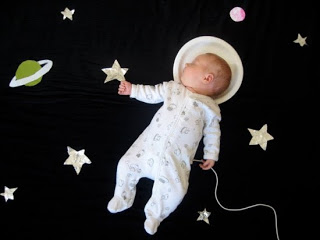
A measurement is only as accurate as the means used to calculate it. The US National Aeronautics and Space Administration contributed a spectacular example of this truism in 1999 when its Mars Climate Orbiter and Mars Polar Lander were destroyed, apparently due to a simple mathematical error. The problem? After investigating, red-faced officials announced preliminary findings. In a critical piece of ground-based navigation software one development team had used Imperial units, i.e. inches, feet and pounds, while another had used metric units. Since the software hadn’t been told to do any conversions, it appeared that the Orbiter got its trajectory wrong and crashed into the Martian surface. Meanwhile, the Mars Polar Lander reached its target at the beginning of December 1999. After 11 months of traveling some 35 million miles (more than 56 million kilometers) in space, the $165 million craft was a mere 130 feet (40 meters) from landing when disaster struck, or rather both the Lander and its piggybacking Deep Space-2 probes were likewise destroyed when they struck the surface.
In one sense, we’ve been routinely “crash-landing” our babies since the late 1970s by recommending for universal use a growth reference based on a single-community sample of predominantly formula-fed children. The pattern of growth of formula-fed children deviates substantially from that of breastfed children, who grow more rapidly in the first two months and less rapidly, particularly in terms of weight, from three to twelve months. Fortunately, this is changing with the introduction in April 2006 of the new World Health Organization standards for child growth and motor development. They’re based on an international sample of nearly 8500 healthy breastfed children from Brazil, Ghana, India, Norway, Oman and the USA, thereby ensuring ethnic or genetic variability in addition to cultural variation in how children are nurtured. Moreover, the new growth curves provide a single international standard that represents the best description of physiological growth for all children from birth to five years of age while they establish the breastfed baby as the normative model for growth and development.
A well-balanced exercise
Breastfeeding is like riding a bicycle built for two. Not only do both front and back riders need to pedal together to permit careful and efficient forward locomotion; they also need to know how to start and stop safely, and of course how to keep their balance in between. Fortunately, when I was a kid Dad was there to coach and coax me as I learned to ride my very own two-wheeler for the first time. As a result, not only did I have fewer spills, scrapes and scratches than if I’d been on my own, but I also learned the basics of how to guide my own children and grandchildren in this regard many years later. Furthermore, I’m sure that they, too, are now well positioned to pass on this elementary skill information to future generations.
To this day I’m surprised when I meet an adult who admits to having never learned how to ride a bike as a child. How can that be, I wonder. Doesn’t everyone know?!
Did the earth move for you, too?
Yes, this is a sex-based analogy, and yes, I know The Alpha Parent has already compared sex to breastfeeding before (see here); but I have a fresh slant.
Notwithstanding conventional carnal canons framed in Hollywood storytelling, Harlequin romance novels and bodice-ripper fiction, which of the following options best describes the first time you had sex with a partner?
- Exquisite! The earth moved magically for both of us; we were instantly attuned to meeting each other’s every need; and we were totally fulfilled by the experience!
- It was okay but we quickly realized that we still had a lot to learn. So, we promptly resolved to do two things: educate ourselves – and keep doing it until we got it right!
- Frankly disappointing. I remember thinking: Is this all there is?! Too big an investment for too small a gain, really. I might try it again one day, but there’s obviously no hurry.
- I found the whole experience disgusting and degrading! I decided, then and there, that flying solo was the way for me. Today, I achieve my pleasure by artificial means only.
Perhaps we need a reference book on the subject of ignorance, including a chapter especially devoted to the generic implications of not knowing what we don’t know. What I have in mind is reflected in the all-purpose lament: “I didn’t think it was going to be this difficult!” – whether “it” refers to riding a bike, having sex … or breastfeeding.
Is it the flawed perception that breastfeeding is so utterly intuitive that leads many observers to assume a no-instructions-required attitude in this regard, and then to be surprised that it’s “so difficult”? This remarkably common premise – and sure-fire recipe for disappointment and failure – is especially ironic if you consider how lacking in positive breastfeeding role models so much of popular culture is today.
We may in fact be more aware of the challenge of learning to ride a bike or having sex – and more confident in our ability to do both well – than we are of breastfeeding. All three are just as surely natural acts as they are learned behaviors; and even if each is not especially difficult, we still need to know the basics and apply ourselves – until we get it right.
Honor thy mother
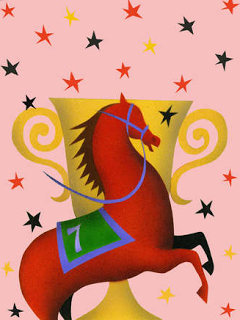
Mother Nature doesn’t have it all that easy what with so many competitors trying to grab a piece of the child-feeding action. And not only that, as I look around I notice that she’s often treated with shocking disrespect: like an old cow by some, like a dumb ass (the kind that’s gray, has long ears and eats grass) by others, and like an old goat by still others. But as far as I’m concerned she’s more like a thoroughbred bay filly – swift, sleek and sure – and forever a winner. That’s why, whenever I step up to the betting window in the Life Long Sweepstakes Office, I always put my money on Mother Nature.
The Old Man and the bamboo plant
There once was an Old Man who, after a long life of strenuous labor, lived his later years quietly tending, with obvious joy and devotion, the small garden attached to his modest house. The neighbors daily observed him cultivating, fertilizing, primping, pruning, shaping and watering his many bushes, ivies, plants, shoots, shrubs and trees of every type and description. But of all the garden greenery so lovingly tended, the Old Man paid particular attention to an unusual dwarf-like bamboo plant located in the farthest corner. Daily, he would water it, carefully cultivate and weed the soil around it, and from time to time add a bit of natural fertilizer – all to no visible avail. The neighbors were quick to note that despite his many ministrations it was obvious that the bamboo plant was going nowhere.
Indeed, during the first year there was no change in the plant’s physical aspect or disposition; nor was there any alteration well into the second or third years either. This obvious fact gave rise to speculation among some of the Old Man’s less-kind neighbors; perhaps it wasn’t a real plant after all but only an ersatz model, albeit a very well-executed one.
Gradually, some neighbors even began to think that the Old Man was having them on, or perhaps that he had “lost it” with age. The least respectful ridiculed him openly, though this had no impact on his continuing devotion to his favorite plant.
On into the fourth year there was still no visible change, and the neighbors knew, of course, that there never would be. Clearly, the Old Man needed his little joke and most of them considered this a small price to pay to avoid dishonoring a village elder.
Then, suddenly, at the beginning of the fifth year, the bamboo plant began to grow. At first it grew mainly outward, spreading its many luscious leaves in all directions. Very soon, though, it started to shoot upward, too, until it was as tall as the Old Man himself, and then higher still, higher than all the other plants and trees in the entire garden.
Afterward, neighbors saw the Old Man frequently sitting for long periods in the opposite corner, quietly contemplating this marvel of Nature, this mute but verdant testimony to his years of steadfastness.
Now then, are we to assume that the bamboo plant did all its growing during the fifth year only? Or were those earlier years of patient, silent devotion of singular importance as well?
Keeping on keeping on can be a challenge in any human activity – including breastfeeding promotion – especially when we meet with widespread skepticism and fail to observe any apparent change despite our best efforts. We can all use a little encouragement, a gentle reminder that change is often invisible, until one day…

James Akre prepared this post for The Alpha Parent. It is adapted from his book “The problem with breastfeeding. A personal reflection” (Hale Publishing, 2006). As founder, chairman and CEO of the International Breastfeeding Support Collective, James focuses on the sociocultural dimension of the universal biological norm for feeding infants and young children, and on pathways for returning breastfeeding to the realm of the ho-hum ordinary everywhere. He is a member of the editorial board of the International Breastfeeding Journal and of the Scientific Advisory Committee of La Leche League France, and past member of the board of directors of the International Board of Lactation Consultant Examiners (IBLCE).

 Mother Nature doesn’t have it all that easy what with so many competitors trying to grab a piece of the child-feeding action. And not only that, as I look around I notice that she’s often treated with shocking disrespect: like an old cow by some, like a dumb ass (the kind that’s gray, has long ears and eats grass) by others, and like an old goat by still others. But as far as I’m concerned she’s more like a thoroughbred bay filly – swift, sleek and sure – and forever a winner. That’s why, whenever I step up to the betting window in the Life Long Sweepstakes Office, I always put my money on Mother Nature.
Mother Nature doesn’t have it all that easy what with so many competitors trying to grab a piece of the child-feeding action. And not only that, as I look around I notice that she’s often treated with shocking disrespect: like an old cow by some, like a dumb ass (the kind that’s gray, has long ears and eats grass) by others, and like an old goat by still others. But as far as I’m concerned she’s more like a thoroughbred bay filly – swift, sleek and sure – and forever a winner. That’s why, whenever I step up to the betting window in the Life Long Sweepstakes Office, I always put my money on Mother Nature.





